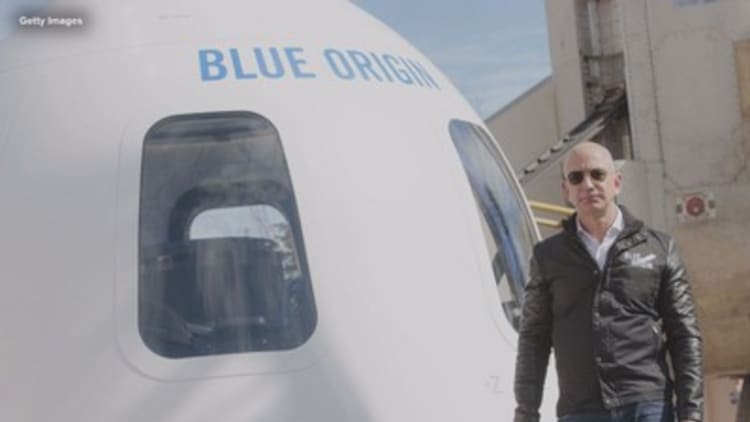
WASHINGTON — The U.S. Air Force selected Blue Origin, Northrop Grumman and United Launch Alliance on Wednesday to each develop a domestic launch system prototype. The long-awaited Pentagon deal known as the Launch Services Agreement enables the U.S. to transition away from foreign propulsion systems such as the Russian-built RD-180 rocket engine.
Per the award, Blue Origin will receive $500 million for the development of the New Glenn rocket, Northrop Grumman's Orbital ATK is slated for $792 million for its OmegA Rocket, and United Launch Alliance will bring in $967 million for development of the Vulcan Centaur rocket.
Absent from the Air Force announcement was SpaceX, despite it winning an initial development award in 2016 alongside Blue Origin, ULA and Northrop Grumman.
"SpaceX is a valuable part of our launch team," began Dr. Will Roper, assistant secretary of the Air Force for acquisition, when asked about an award for SpaceX. "They have seven future launches to be done, and they are putting up critical payloads for us including GPS."
"So, they have multiple launches coming up in the future, and the Air Force is interested and has the door open to work with them on certification if they want to pursue that with us. They can certainly compete in Phase 2," he added.
Below is a breakdown of launch capabilities and award details.
Blue Origin's New Glenn
- Single configuration
- Fully reusable first stage
- BE-4 booster engine, BE-3U upper stage engine
- Work will be carried out in Kent, Washington; Huntsville, Alabama, Kennedy Space Center and Cape Canaveral Air Force Station, Florida
- Launch facilities at Cape Canaveral Air Force Station, Florida; and Vandenberg Air Force Base, California
- Initial launch capability by 2020
- Work is slated to be completed by July 31, 2024
Northrop Grumman's Orbital ATK's OmegA
- Solid rocket motor first and second stage
- RL10 upper stage engine
- Work will be carried out in Chandler, Arizona; Magna and Promontory, Utah; Iuka, Mississippi; West Palm Beach, Florida; Sandusky, Ohio, and Michoud, Louisiana
- Launch facilities at Kennedy Space Center, Florida, and Vandenberg Air Force Base, California
- Initial launch capability by 2021
- Work is slated to be completed by Dec. 31, 2024
United Launch Alliance's Vulcan Centaur
- BE-4 booster engines
- Next generation RL10 upper stage engine
- GEM 63XL solid rocket motors
- Work will be performed in Centennial, Colorado, and Decatur, Alabama
- Launch facilities at Cape Canaveral Air Force Station, Florida, and Vandenberg Air Force Base, California
- Initial launch capability by 2021
- Work is slated to be completed by March 31, 2025


